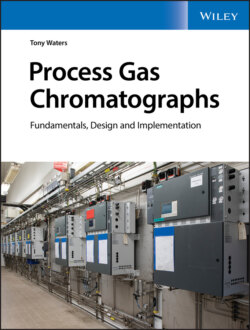Читать книгу Process Gas Chromatographs - Tony Waters - Страница 14
ОглавлениеPart One PGC fundamentals
1975 Beckman Model 6800 Air Quality Chromatograph.
Figure 1.1 A Classic Process Gas Chromatograph.
Source: Beckman Historical Collection, Box 58, Folder 28. Science History Institute, Philadelphia. https://digital.sciencehistory.org/works/474299142 Reproduced with permission of Rosemount, Inc.
“We cannot teach people anything; we can only help them discover it within themselves.”
Attributed to Galileo Galilei 1564–1642
Why study this?
Part One introduces the art and science of gas chromatography (GC) as applied to the industrial process instrument.
These four chapters explain how a GC column works, why the compounds in the injected sample form the characteristic peak shape, how one peak becomes separate from another peak, and how we can predict the position and shape of peaks on a chromatogram from known patterns of peak timing and width.
The text presents this information in an easy‐to‐read and mostly non‐mathematical manner. Yet it shuns simplistic analogies of what happens inside a GC column because they tend to mislead rather than to inform. Instead, it offers a challenging insight into real chromatographic behavior.
The knowledge gained here is a necessary preparation for understanding the function of the hardware devices and software techniques introduced in later chapters of the book. For those who aspire to be proficient in the application or troubleshooting of process gas chromatographs, mastery of these concepts is not optional.
